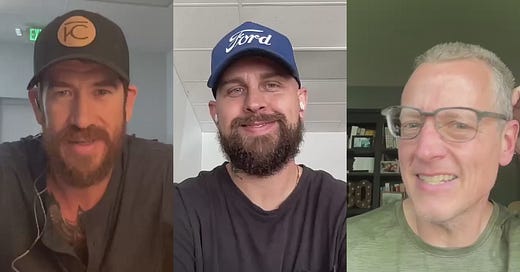In this Bonus Conversation, we dive deep into the contextual differences between two hubs within the Kansas City Underground: Zero Hour, focused on equipping high school students, and Western Edge, a hub that serves a diverse suburban and rural population. Cory McElvain, the leader of Zero Hour, and Brian Johnson, leader of Western Edge, share their experiences in contextualizing the core functions of equipping, coaching, and convening within their distinct settings.
This conversation builds on the companion article:
👉 Read full story here: "No Two Hubs Are the Same"
🔥 Key Takeaways:
🔥 Contextualization: A Tale of Two Hubs
We start by contrasting the distinct rhythms of Zero Hour and Western Edge. Both hubs operate under the same core principles but are shaped by the needs and challenges of their specific contexts. Zero Hour’s focus is on high school students in Kansas City, while Western Edge spans a larger suburban and rural geography, from Piper to Gardner and Lawrence.
While Zero Hour emphasizes fast-paced, innovative methods to engage students in mission, Western Edge integrates a diverse range of people—parents, retirees, and professionals—who are involved in missional work and microchurch leadership. The specific focus of Zero Hour on students creates unique challenges, such as overcoming social disconnection and training students in real-world, conversational evangelism. In contrast, Western Edge serves a variety of contexts, including those working with the elderly and marginalized communities, where the relational dynamics differ.
🔥 Equipping Students vs. Equipping Families
Cory shares how Zero Hour initially took the standard missionary pathway training and adapted it to better suit high school students—parring down from seven sessions to four, focusing on foundational tools like conversational evangelism, eating together, and building relationships beyond school walls. Meanwhile, Western Edge has a more traditional approach to equipping—teaching through longer sessions with leaders who have already been discipling for years. The difference lies in the audience: Zero Hour requires quick, digestible training for a younger, less experienced crowd, while Western Edge can delve deeper with leaders who are already seasoned in the faith.
🔥 Coaching in Real Time vs. Coaching Through Structured Sessions
Zero Hour embraces the fast pace of coaching in real-time. With high school students balancing school life and their disciple-making efforts, coaching happens on the go—through phone calls, Google forms, and weekly check-ins. On the other hand, Western Edge creates space for longer, more structured coaching relationships. They focus on sustained, long-term growth for adults involved in missional work, often having coaching conversations in person or over Zoom.
🔥 Convening: Creating Community in Different Contexts
While both hubs convene their leaders for collaboration and vision-casting, the Zero Hour model is designed to accommodate the speed and volatility of student schedules. The students gather for monthly equipping and accountability, but it’s often done within a camp or conference setting. Conversely, Western Edge has a more established rhythm of monthly gatherings, focused on fellowship, prayer, and long-term planning in a stable environment, where leaders have the time and space to develop deeper relationships.
🔥 The Need for Contextualization in Decentralized Movements
Cory and Brian both emphasize the importance of contextualization—adjusting strategies, tools, and rhythms to fit the unique needs of their communities. As Cory points out, Zero Hour’s challenge lies in helping students make the leap from personal growth in a church setting to living out their discipleship in everyday life. Western Edge, on the other hand, is working with a broad range of ages and contexts, and the challenge there is more about maintaining a diverse community of leaders who can serve and support the various microchurches across a vast suburban and rural area.
🎧 Listen to the full conversation for a deeper dive into how Zero Hour and Western Edge each contextualize their approach to equipping, coaching, and convening.
💬 Join the conversation: Drop your thoughts, experiences, and questions in the comments below!
📣 Share the good news—pass it on! Tap the share button to send this to someone you want to encourage or equip.
📄 Missed other articles in the Hubology series? Catch up here:
👉 Subscribe to stay connected to more Bonus Conversations, tools, and insights from the front lines of decentralized movement leadership!













Share this post